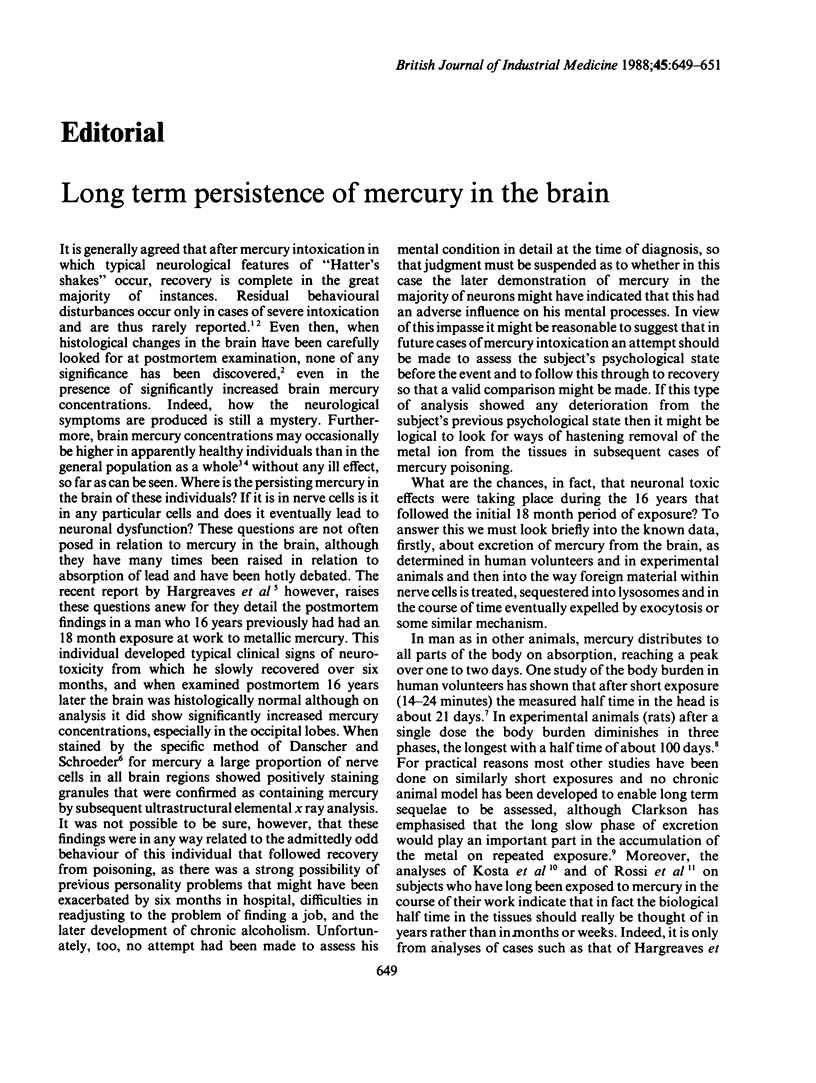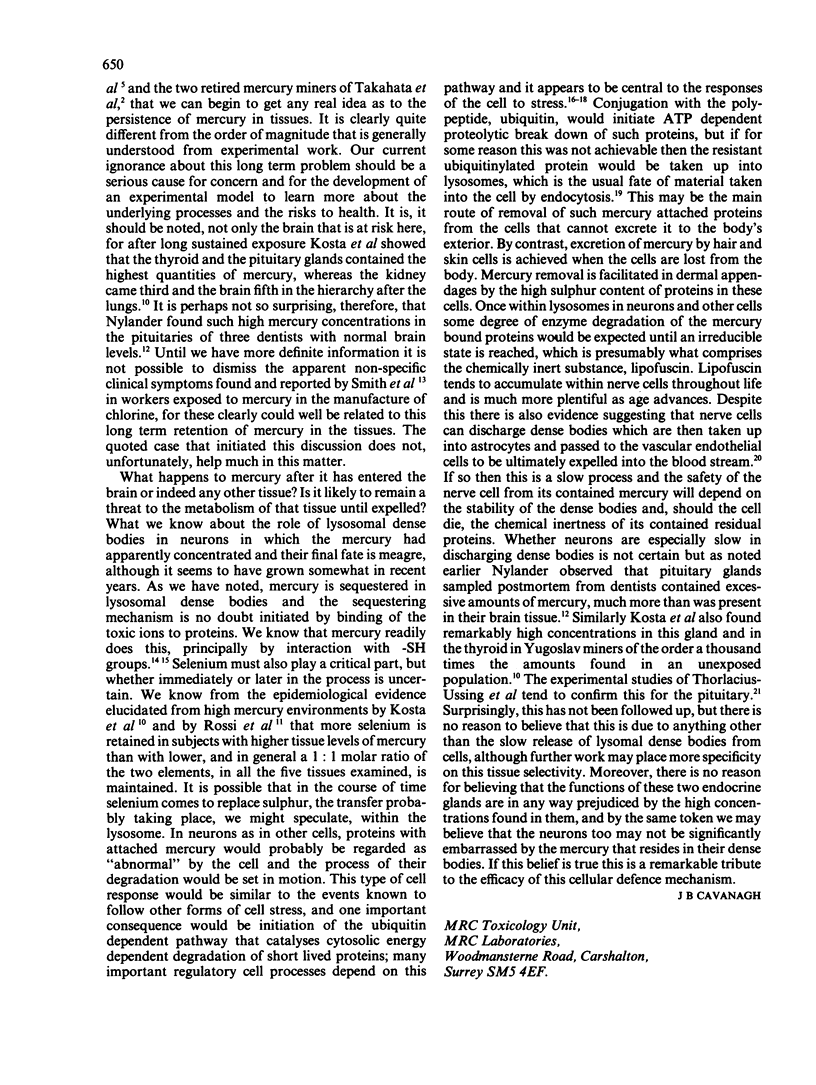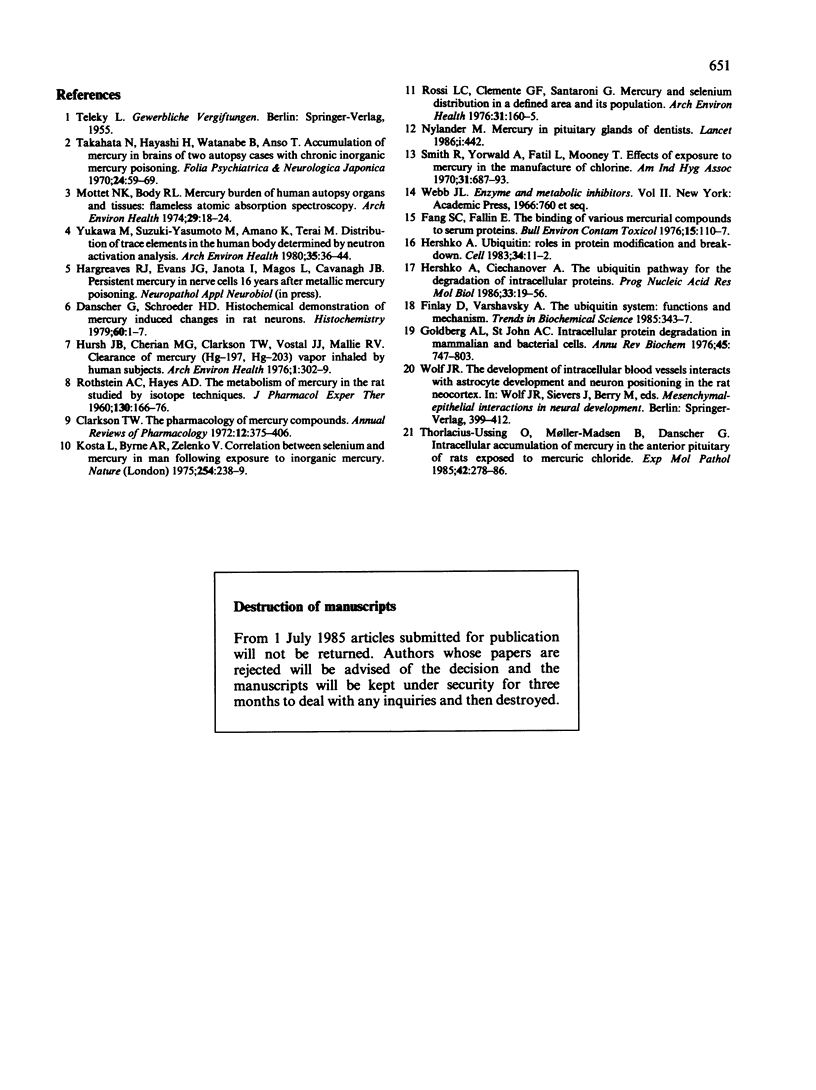Full text
PDF


Selected References
These references are in PubMed. This may not be the complete list of references from this article.
- Clarkson T. W. The pharmacology of mercury compounds. Annu Rev Pharmacol. 1972;12:375–406. doi: 10.1146/annurev.pa.12.040172.002111. [DOI] [PubMed] [Google Scholar]
- Fang S. C., Fallin E. The binding of various mercurial compounds to serum proteins. Bull Environ Contam Toxicol. 1976 Jan;15(1):110–117. doi: 10.1007/BF01686202. [DOI] [PubMed] [Google Scholar]
- Goldberg A. L., St John A. C. Intracellular protein degradation in mammalian and bacterial cells: Part 2. Annu Rev Biochem. 1976;45:747–803. doi: 10.1146/annurev.bi.45.070176.003531. [DOI] [PubMed] [Google Scholar]
- Hershko A., Ciechanover A. The ubiquitin pathway for the degradation of intracellular proteins. Prog Nucleic Acid Res Mol Biol. 1986;33:19-56, 301. doi: 10.1016/s0079-6603(08)60019-7. [DOI] [PubMed] [Google Scholar]
- Hershko A. Ubiquitin: roles in protein modification and breakdown. Cell. 1983 Aug;34(1):11–12. doi: 10.1016/0092-8674(83)90131-9. [DOI] [PubMed] [Google Scholar]
- Hursh J. B., Cherian M. G., Clarkson T. W., Vostal J. J., Mallie R. V. Clearance of mercury (HG-197, HG-203) vapor inhaled by human subjects. Arch Environ Health. 1976 Nov-Dec;31(6):302–309. doi: 10.1080/00039896.1976.10667240. [DOI] [PubMed] [Google Scholar]
- Kosta L., Byrne A. R., Zelenko V. Correlation between selenium and mercury in man following exposure to inorganic mercury. Nature. 1975 Mar 20;254(5497):238–239. doi: 10.1038/254238a0. [DOI] [PubMed] [Google Scholar]
- Mottet N. K., Body R. L. Mercury burden of human autopsy organs and tissues. Arch Environ Health. 1974 Jul;29(1):18–24. doi: 10.1080/00039896.1974.10666520. [DOI] [PubMed] [Google Scholar]
- Rossi L. C., Clemente G. F., Santaroni G. Mercury and selenium distribution in a defined area and in its population. Arch Environ Health. 1976 May-Jun;31(3):160–165. doi: 10.1080/00039896.1976.10667211. [DOI] [PubMed] [Google Scholar]
- Takahata N., Hayashi H., Watanabe S., Anso T. Accumulation of mercury in the brains of two autopsy cases with chronic inorganic mercury poisoning. Folia Psychiatr Neurol Jpn. 1970;24(1):59–69. doi: 10.1111/j.1440-1819.1970.tb01457.x. [DOI] [PubMed] [Google Scholar]
- Thorlacius-Ussing O., Møller-Madsen B., Danscher G. Intracellular accumulation of mercury in the anterior pituitary of rats exposed to mercuric chloride. Exp Mol Pathol. 1985 Apr;42(2):278–286. doi: 10.1016/0014-4800(85)90034-6. [DOI] [PubMed] [Google Scholar]
- Yukawa M., Amano K., Suzuki-Yasumoto M., Terai M. Distribution of trace elements in the human body determined by neutron activation analysis. Arch Environ Health. 1980 Jan-Feb;35(1):36–44. doi: 10.1080/00039896.1980.10667459. [DOI] [PubMed] [Google Scholar]


